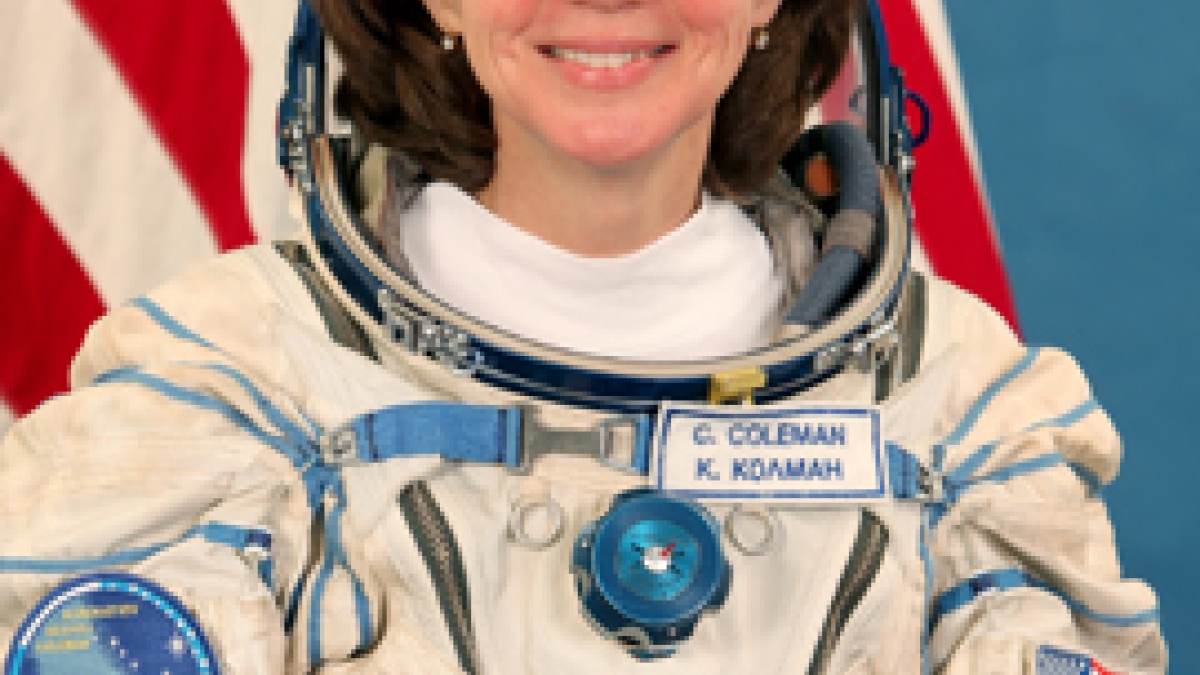ASU hosts NASA astronaut Cady Coleman

Arizona State University’s College of Technology and Innovation will host NASA astronaut Cady Coleman (Colonel, USAF, RET.) on the ASU Polytechnic campus on March 1. Coleman joined NASA in 1992 and has since logged more than 4,330 hours in space aboard the space shuttle Columbia and the International Space Station.
“Dr. Coleman’s career is a testament to the wide range of opportunities for students who pursue Science, Technology, Engineering and Math (STEM) degrees,” said Mitzi Montoya, vice provost and dean of ASU’s College of Technology and Innovation. “This is a tremendous opportunity for current and prospective students and alumni to come meet a true Renaissance woman."
Coleman’s talk, “Six Months in Space onboard the International Space Station,” is a Thing on Thursday production and begins at 4 p.m., in the Cooley Ballroom on the ASU Polytechnic Campus. Doors will open at 3:30 p.m. RSVP by Feb. 27 at http://technology.asu.edu/thing/astronaut. An Aviation Open House will follow the event, with tours available of the Del E. Webb Foundation High Altitude Chamber Lab, Ottosen Air Traffic Control Simulation Laboratory and flight simulators, from 5:15 to 6:15 pm. Prospective students can learn more about CTI’s aviation programs in professional flight, air traffic management and air transportation management.
Coleman received a Bachelor of Science degree in chemistry from the Massachusetts Institute of Technology in 1983. She joined the Air Force as a second lieutenant and continued her graduate work at the University of Massachusetts Amherst, where her research focused on polymer synthesis using the olefin metathesis reaction and polymer surface modification.
In 1988, Coleman entered active duty and was assigned to Wright-Patterson Air Force Base. As a research chemist at the Materials Directorate of the Wright Laboratory, she synthesized model compounds for optical applications, such as advanced computers and data storage. Coleman also acted as a surface analysis consultant for the Long Duration Exposure Facility (launched from STS-41C in 1984 and retrieved during STS-32 in 1990). Coleman retired from the Air Force in November 2009.
Coleman was selected by NASA in March 1992 and reported to the Johnson Space Center in August 1992. She served as a mission specialist on STS-73 and was the lead mission specialist on STS-93 for the deployment of the Chandra X-Ray Observatory. On Coleman's third space mission, she served as a flight engineer aboard the Russian Soyuz TMA-20 spacecraft for launch and landing and spent 159 days in space aboard the International Space Station. In addition to performing science experiments and space station system maintenance operations, she acted as the lead robotics and science officer during her tenure aboard the ISS. Notably, Coleman was the lead robotic arm operator for the capture of Kounatori, performing the second-ever free flyer robotic capture aboard the ISS.